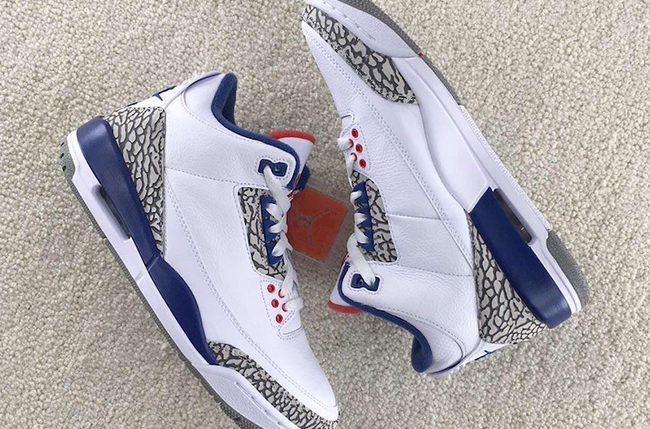Adidas – sports shoes conquering the world.
 It is believed that sneakers, as an independent type of shoe, appeared in the United States at the end of the 19th and beginning of the 20th centuries. The first models were shoes with a rubber sole and fabric upper, as well as a reinforced back and toe. These shoes were so soft and comfortable that the steps of the person walking in them were not even heard. From here the American name of sneakers went – “Sneakers” (sneakers from English sneak – to sneak, sneak up). Unfortunately, it is quite difficult to restore the manufacturer and the exact date of the very first sneakers, since today there are many very conflicting opinions on this.
It is believed that sneakers, as an independent type of shoe, appeared in the United States at the end of the 19th and beginning of the 20th centuries. The first models were shoes with a rubber sole and fabric upper, as well as a reinforced back and toe. These shoes were so soft and comfortable that the steps of the person walking in them were not even heard. From here the American name of sneakers went – “Sneakers” (sneakers from English sneak – to sneak, sneak up). Unfortunately, it is quite difficult to restore the manufacturer and the exact date of the very first sneakers, since today there are many very conflicting opinions on this.
However, it is well known that in 1917 Converse released the first pair of shoes designed specifically for playing basketball – Converse All-Stars sneakers.
This model revolutionized and became the most commercially successful model of the first generation sneakers, by the way, largely due to the involvement of the famous American basketball player of that time – Chuck Taylor in the advertising campaign.
In 1924, sneakers began to be produced in Europe. The brothers Adolf and Rudolf Dassler organized a family-owned shoe-making company, calling it the “Dassler Brothers Shoe Company”.
The first products of their company were shoes for athletes training.
A bit later, a quarrel broke out between the brothers, giving the world two well-known sportswear companies Adidas (Adolf Dassler) and Puma (Rudolf Dassler).
Adolf Dassler was born on November 3, 1900 in the small Bavarian town of Herzogenaura.
His mother was a washerwoman and his father was a baker. Adi, as they called Adolf in the family circle, grew up a quiet boy. When he was 14 years old, Germany began the First World War, but Adi didn’t get to the front in his infancy. He didn’t rush there. His passion was football, which just then became the most popular game in Europe.
In 1918, the war ended in the defeat of Germany. Devastation and inflation reigned in the country, and millions of soldiers returning from the front replenished the army of the unemployed. Bad times have come for the Dassler family. Overshadowed by casual earnings, in early 1920, the Dasslers at the family council decided to organize a family business – making shoes.
Dassler’s ideas came up with German thoroughness. Under the shoe shop they gave the mother’s laundry. Inventive Adi converted the bike into a skin-cutting machine. His sisters and mother made patterns from the canvas. Adi, his older brother Rudolph (or Rudy as a family) and father cut shoes. The first products of the Dassler family were sleeping slippers. The material for them was written-off military uniforms, and the soles were cut out of old car tires.
Rudy took over the sale of this conversion product. Adi was engaged in the organization of production and the invention of new models. Four years later, 12 workers, including family members, produced 50 pairs of shoes per day. And in July 1924, they founded the Dassler Brothers Shoe Factory. Both brothers with their opposite characters complement each other well.
If Adi was an inventive and timid intellectual and chased football, then Rudy was explosive and preferred jazz, sex and boxing to everything else. By 1925, the firm was doing so well that Adi could afford a little imagination.
As an avid football player, he came up with and sewed football boots with spikes, which were forged for him by a local blacksmith. So was born studded sports shoes. The football model turned out to be comfortable and together with gymnastic slippers became the main products of the Dasslers. Soon the production no longer fit in the yard of their house. In 1927, the Dasslers rented an entire building for their factory. Now the staff has been increased to 25 people, and production – up to 100 pairs of shoes per day.
Soon, the Dasslers bought the rented factory, and the whole family moved to the mansion nearby. Adi no longer remembered that several years ago he was going to become a baker. Now he was completely seized by the opportunity to make sports shoes, and then test them in sports games with his friends. The success of the studded football boots has tempted Adi to make shoes specifically for the strongest participants in the Olympics.
For the first time, athletes performed in Dassler studded shoes at the 1928 Olympics in Amsterdam. At the next Olympics in 1932 in Los Angeles, the German Arthur Jonat became the third in the 100-meter race.
But the most successful for Adi was 1936. He was born the first-born, and at the Berlin Olympics, black American runner Jesse Owen in Dassler shoes won four gold medals and set five world records. From that moment on, Dassler became the unrecognized standard of sports shoes. Adi’s marketing success was obvious.




